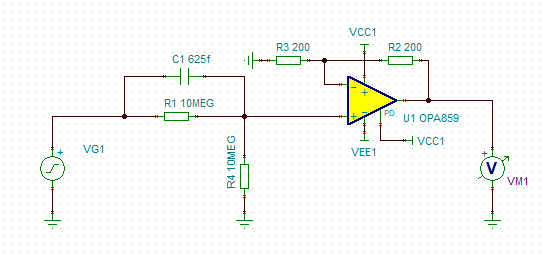Hi,
I am working on a differential probe with a the first opamp stages being OPA859's. The input common mode capacitance is said to be 0.62pF.
I could not find any reference regarding any change of that capacitance based on biasing or frequency etc.
Please consider this schematic:
This forms a 0dB buffer stages with a flat response up to the point where BW starts falling (~730MHz @ -3dB)
Any change on the input common mode capacitance of the opamp would destroy the flatness of the frequency response that i see.
So, does the input common mode capacitance stay the same?
FYI: TSC file
Regards
Manos Tsachalidis


